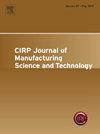The electrically assisted processing has advantages in reducing manufacturing difficulty and improving forming accuracy, and the rational application of electroplastic effect promotes the development of material forming and advanced manufacturing. The effects of electroplasticity, temperature and strain rate on the flow behavior are investigated by electrically-assisted isothermal tensile and furnace isothermal tensile experiments under different stress states. A neural network-based evolving plasticity model is combined with inverse engineering method to characterize coupling effects. The results show that the electric pulse induces Joule heating effect and electroplastic effect to reduce deformation resistance and improve formability. The non-monotonic effect of temperature and strain rate on flow behavior is attributed to dynamic strain aging, and electrical pulses suppress negative strain rate effects. The combination of artificial neural network (ANN) model and traditional constitutive model can accurately capture the mapping relationship of strain, strain rate, temperature and current density to stress. The calibration results by the inverse engineering method are regarded as the input set of the ANN model to achieve the prediction of plastic behavior at large strain. Analytical parameter calculation of the pDrucker function can accurately describe the difference and evolution of the plastic response under different stress states. The simulation of the ANN model based on the DF2014 fracture model accurately reflects the plastic response under different conditions and provides accurate predictions in the forming simulation of the cap beam.


